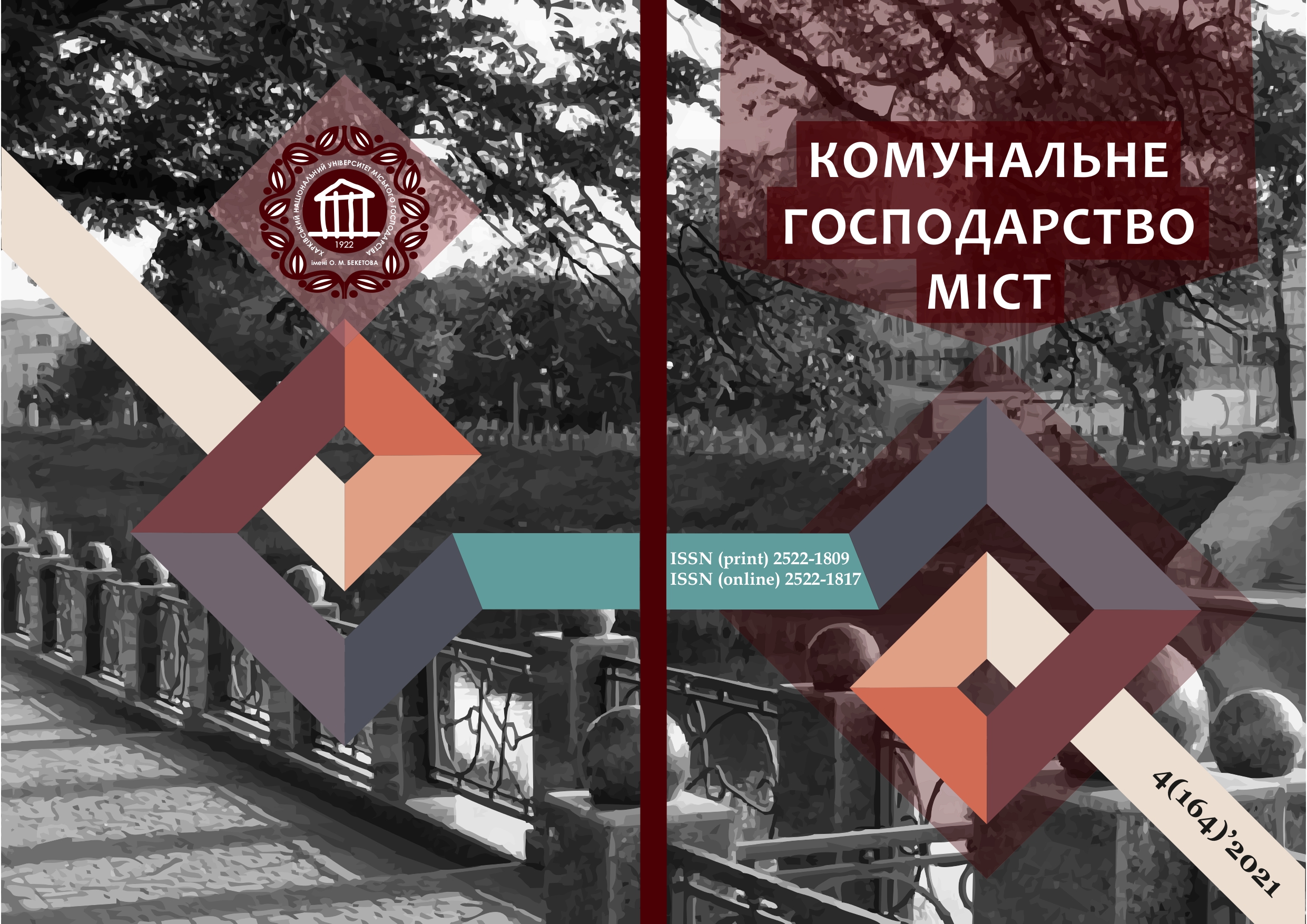АНАЛІЗ СТАНУ БЕЗПЕКИ ЛЮДИНИ, ДОВКІЛЛЯ ТА УМОВ ПРАЦІ ПІД ЧАС ПОВОДЖЕННЯ З ДОБРИВАМИ
Array
Ключові слова:
добрива, продовольча безпека, забруднення, довкілля, здоров’я людини, безпека праці.Анотація
Розглянуто проблему ефективності та безпеки використання добрив у сільському господарстві. Проаналізовано переваги та недоліки кожного виду добрив. Визначено шкідливі та небезпечні чинники усього життєвого циклу добрив для ґрунту, поверхневих та підземних вод, повітря, здоров’я людини та умов праці з ними. Запропоновано способи безпечного поводження з добривами.
Посилання
2. Famine knocking at the door of 41 million worldwide. UN News. Retrieved from https://news.un.org/en/story/2021/06/1094472 22.06.2021
3. Rome Declaration on World Food Security. World Food Summit, 13–17 November, 1996, Rome. Retrieved from http://www.fao.org/3/w3613e/w3613e00.htm
4. The Global Food Security Index. Retrieved from https://foodsecurityindex.eiu.com
5. Dankevych, V. (2020). Ukrainian chernozems, food safety and inefficiency. Economic Truth. Retrieved from https://www.epravda.com.ua/columns/2020/08/10/663845/
6. Balyuk, S.A., Vorotintseva, L.I. & Shimel, V.V. (2017). Modern problems of soil degradation and measures to achieve its neutral level. Bulletin of Agricultural Science, 8(95), 5–11. DOI: https://doi.org/10.31073/agrovisnyk201708-01
7. Khodakovskaya, O.V., Korchinskaya, S.G. & Matvienko, A.P. (2017). Ecological and economic aspects of soil fertility reproduction. Agriculture, 1, 16–21.
8. Assefa, S. (2019). The Principal Role of Organic Fertilizer on Soil Properties and Agricultural Productivity – A Review. Agricultural Research & Technology: Open Access Journal, 22(2): 556192. DOI: http://dx.doi.org/10.19080/ARTOAJ.2019.22.556192
9. Adegoke, А. А., Awolusi, O., & Stenström, T. A. (2016). Organic Fertilizers: Public Health Intricacies. Organic Fertilizers – From Basic Concepts to Applied Outcomes, 342–374. DOI: http://dx.doi.org/10.5772/64195
10. Forecast of food, farming and fertilizer use in the European Union 2019-2029. (2019). Fertilizers Europe. Retrieved from https://www.fertilizerseurope.com/wp-content/uploads/2019/12/Forecast-of-food-farming-and-fertilizer-use-in-the-European-Union.pdf
11. Berezyuk, S. V., & Zubar, I. V. (2019). Modern economic and ecological aspects of fertilizer using in crop production. Economy AIC, 10, 34–43. DOI: https://doi.org/10.32317/2221-1055.201910034
12. Kurzemann, F., Plieger, U., Probst, M., Spiegel, H., Sandén, T., Ros, M., & Insam, H. Long-term effect of organic amendments, mineral fertilizers and combinations thereof, on plant yield, soil physic-chemical and microbiological properties. EGU General Assembly 2021, 19–30 April, 2021. DOI: https://doi.org/10.5194/egusphere-egu21-8182
13. Hasler, K. (2017). Environmental impact of mineral fertilizers: possible improvements through the adoption of eco-innovations. Wageningen: Wageningen University. DOI: https://doi.org/10.18174/422865
14. Savci, S. (2012). An Agricultural Pollutant: Chemical Fertilizer. International Journal of Environmental Science and Development, 3, 73–80. DOI: https://doi.org/10.7763/IJESD.2012.V3.191
15. Mykhailova, E.O. Greenhouse gas emissions in Ukraine and the world. The Collection of scientific articles and materials of VІIІ International scientific-practical conference and 115-International conference of EAS, 8–9 December, Kharkiv. Kharkiv : NGO “UHLSS”. 645 p.
16. Korsun, C.G., & Klimenko, I.I. (2018). Ecotoxicological status of fertilizer systems for grain-row crop rotation : monograph. Vinnytsia : LLC "WORKS". 212 p.
17. Dotsenko, O.V. (2012). Humus state of typical chernozem under the influence of long-term fertilization. Bulletin of Agricultural Science, 12, 75–76.
18. Contamination of the soil environment with mineral fertilizers and solutions. Proceedings of the International Scientific Symposium SDEV‘2018, 28 February – 3 March, 2018, Lviv-Slavske. Lviv: Panorama. 343 p.
19. Bryan, N. S., & Grinsven, H. (2013). The Role of Nitrate in Human Health. Advances in Agronomy, 119, 153–182. DOI: https://doi.org/10.1016/B978-0-12-407247-3.00003-2
20. Tirado, R. & Allsopp, M. (2012). Phosphorus in agriculture Problems and solutions. Greenpeace Research Laboratories Technical Report (Review). Retrieved from https://www.greenpeace.to/greenpeace/wp-content/uploads/2012/06/tirado-and-allsopp-2012-phosphorus-in-agriculture-technical-report-02-2012.pdf
21. Nazarenko, E. A., Nikozyat, Yu. B., & Ivashchenko, O. D. (2015). Estimation of ecological safety of agricultural crops at the increased content of fluorides in soils of Poltava region. Transactions of Kremenchuk Mykhailo Ostrohradskyi National University, 2 (91), 159–164.
22. Ngatia, L., Grace III, J. M., Moriasi, D. & Taylor, R. (2019). Nitrogen and phosphorus eutrophication in marine ecosystems. Monitoring of marine pollution. DOI: http://dx.doi.org/10.5772/intechopen.81869
23. Khan, S.A., Mulvaney, R.L. & Ellsworth, T.R. (2014). The potassium paradox: Implications for soil fertility, crop
production and human health. Renewable Agriculture and Food Systems, 29, 3–27. DOI: https://doi.org/10.1017/S1742170513000318
24. Engwa, G.A., Ferdinand, P.U., Nwalo, F.N., & Unachukwu, M.N. (2019). Mechanism and Health Effects of Heavy Metal Toxicity in Humans. Poisoning in the Modern World – New Tricks for an Old Dog? DOI: https://doi.org/10.5772/intechopen.82511
25. Prodanchuk, M.G., Velyky, V.I., Mudry, I.V., & Lepyoshkin, I.V. (2007). Hygienic aspects and normative-legal provision of state sanitary-epidemiological supervision during mineral fertilizers transportation, storage and use. Modern problems of toxicology, food and chemical safety, 1, 4–8.
26. Demidov, P.G., Shandyba, V.A., & Shcheglov, P.P. (1981). Combustion and properties of combustible substances. Moscow : Chemistry. 272 p.
27. Chemical Advisory: Safe Storage, Handling, and Management of Ammonium Nitrate. (2013). Retrieved from https://rib.msb.se/Filer/pdf/27206.pdf
##submission.downloads##
Опубліковано
Як цитувати
Номер
Розділ
Ліцензія
Автори, які публікуються у цьому збірнику, погоджуються з наступними умовами:
- Автори залишають за собою право на авторство своєї роботи та передають журналу право першої публікації цієї роботи на умовах ліцензії CC BY-NC-ND 4.0 (із Зазначенням Авторства – Некомерційна – Без Похідних 4.0 Міжнародна), котра дозволяє іншим особам вільно розповсюджувати опубліковану роботу з обов'язковим посиланням на авторів оригінальної роботи та першу публікацію роботи у цьому журналі.
- Автори мають право укладати самостійні додаткові угоди щодо неексклюзивного розповсюдження роботи у тому вигляді, в якому вона була опублікована цим журналом (наприклад, розміщувати роботу в електронному сховищі установи або публікувати у складі монографії), за умови збереження посилання на першу публікацію роботи у цьому журналі.
- Політика журналу дозволяє і заохочує розміщення авторами в мережі Інтернет (наприклад, у сховищах установ або на особистих веб-сайтах) рукопису роботи, як до подання цього рукопису до редакції, так і під час його редакційного опрацювання, оскільки це сприяє виникненню продуктивної наукової дискусії та позитивно позначається на оперативності та динаміці цитування опублікованої роботи (див. The Effect of Open Access).

